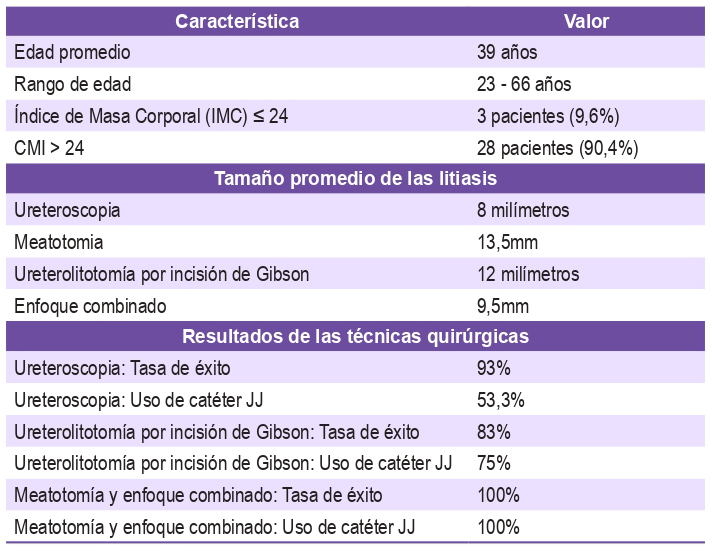Management of lower ureteral calculi in the Hospital de Clínicas
DOI:
https://doi.org/10.18004/anales/2024.057.02.28Keywords:
ureteral lithiasis, ureteroscopy, ureterolithotomy, meatotomyAbstract
Introduction: Ureteral lithiasis represents a substantial proportion of consultations within the field of urology. The therapeutic techniques that may be employed are contingent upon the location and characteristics of the stones in question. The objective of this study is to: The objective of this study is to evaluate the management and success of treatment of lower ureteral lithiasis at the Hospital de Clínicas. Materials and Methods: A retrospective, descriptive, and observational non-probabilistic study was conducted on consecutive cases comprising 31 patients diagnosed with lower ureteral lithiasis. Techniques such as ureteroscopy, meatotomy, and Gibson incision ureterolithotomy were utilized. The success rate and incidence of complications associated with each procedure were evaluated. The results of the study are presented in the following section. The success rate was 93% for ureteroscopy, 83% for
ureterolithotomy, and 100% for combined meatotomy/approach. The use of a double J catheter was more prevalent in open approaches. The postoperative recovery period was shorter for endourologic techniques. It can be concluded that all techniques proved to be effective in the management of lower ureteral lithiasis. Endourological techniques offer the advantages of a shorter recovery period and a reduced need for catheters, which are typically required for open approaches. The selection of the most appropriate procedure should be based on an assessment of the individual patient's characteristics and the availability of resources, in order to ensure the most effective and appropriate treatment plan.
Downloads
Metrics






